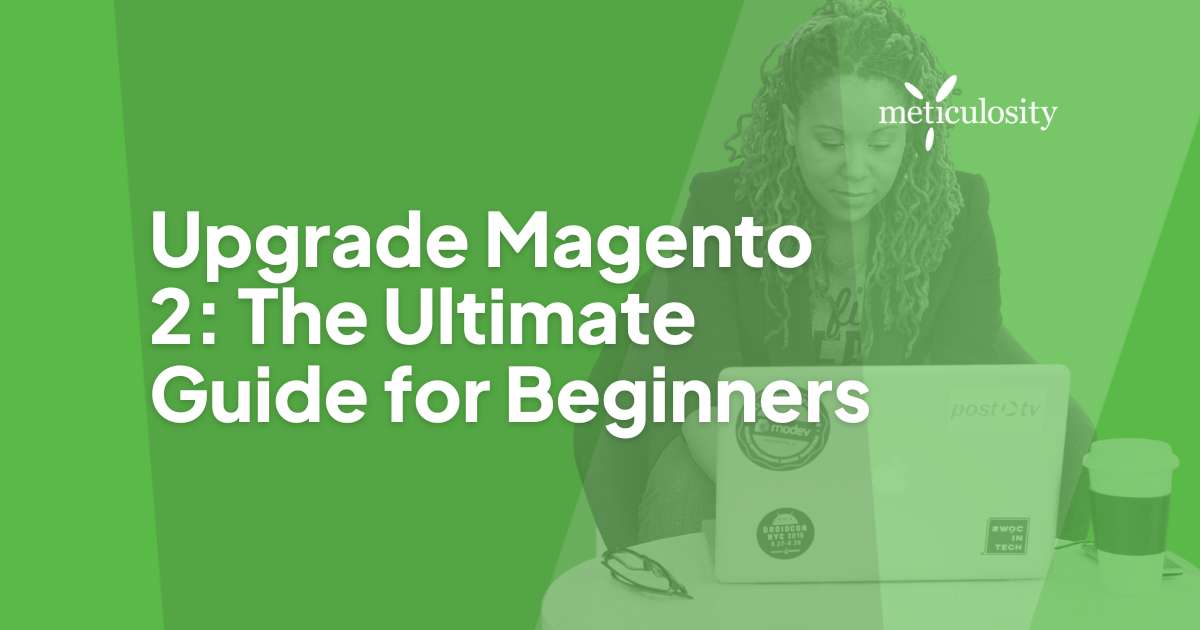Upgrading your Magento store to version 2 is a big decision - but one that can pay off in big ways. If you're new to Magento, or just want to upgrade quickly and easily, this blog is for you! In this article, we'll cover the basics of Magento 2 and explain how to upgrade your store from version 1 to version 2 quickly and easily.
We'll also provide tips on how to prepare your store for the upgrade process and answer questions you might have along the way. So whether you're a complete beginner or an experienced Magento developer, read on to learn everything you need to know about upgrading your store to version 2!
Before Upgrading Magento 2
Upgrading your Magento store to version 2 is a big deal - make sure you do it right! Familiarize yourself with the new features of Magento 2 and make sure there are no errors on the server before you upgrade. Also, be sure to back up your magento2 store before you start - just in case anything goes wrong. Once everything is ready, upgrade to Magento2 and enjoy all the new features!
Step 1: Backup Magento
It is always important to make regular backups of your store in case anything goes wrong. By doing this, you will be able to restore your store quickly and with no difficulty. Make sure you have a backup plan in place so that you are not left scrambling if something unexpected happens.
For example, having multiple copies of your files on different devices can help you recover from a server-related problem or a lost product download. Backing up your store regularly will help keep your business running smoothly and ensure you continue generating sales.
Step 2: Turn on maintenance mode
Before you upgrade your Magento 2 store, it is important to turn on maintenance mode. This will ensure that all your data and configuration are saved and don't go missing during the upgrade process. To do this, go to Configuration | Server Maintenance and click on the Enable Maintenance Mode button.
After clicking on this button, maintenance mode will be enabled, and Magento will start backing up all the relevant files and data. Once the upgrade process is completed, you can safely de-activate maintenance mode by going back to Configuration | Server Maintenance.
Step 3: Check for the current Magento version
Before you begin your upgrade to Magento 2, it is important to make sure that the version of Magento that you are using is up-to-date. To do this, open the Magento admin panel and navigate to System > Configuration > General. In the "Magento Version" section, make sure that the current version of Magento is shown as 2.0.14. If not, update immediately!
How to Upgrade to Magento 2
Before you upgrade from Magento 1 to Magento 2, it is important to understand the differences between both versions of the software. Here are some of the key points that you need to consider:
- Magento 2 has a new module-based architecture which makes it more scalable and efficient.
- It has improved security features that make your site more secure from online attacks.
- Magento 2 also supports faster product load times, making your site easier to use for customers.
Magento Upgrade Issues
Upgrading your website is always a great idea, but being prepared for the unexpected is important. Make sure to monitor website performance after upgrading - if there are any issues, address them as soon as possible!
In case of any problems, know where to go for support so you can get the help you need as quickly as possible. Finally, be sure to keep your website updated so that users have the latest and greatest features.
1. Component dependency conflict
If you're running an online store and upgrading to Magento 2, be sure to check for potential conflicts. If a conflict is found, you will need to decide which of the two components should be dropped or replaced. Sometimes, replacing one entire module with a new version is easier and faster than trying to fix individual conflicts.
Once a conflict has been identified, make sure to back up your store before proceeding. Finally, always follow the Magento upgrade instructions carefully to avoid any accidental data loss or site crashes during the upgrade process.
2. Can’t create a directory
Creating a directory for your business can be an important part of marketing your business online. However, if it is not showing up in Google search results, a few things can be done to improve the situation.
Make sure the directory is properly formatted and includes all the necessary information, as well as using other keywords that may generate better results for your business. Additionally, make sure the website is designed and optimized for search engine results. If these steps are not taken, then it may be time to consider alternative marketing strategies or liquidate your business altogether.
3. Cannot allocate memory error
If upgrading your Magento 2 goes wrong, it is important to troubleshoot the issue as soon as possible. By following these simple steps, you can prevent serious consequences and save yourself a lot of time and hassle. Certain actions can trigger memory errors, and avoiding them can save your shop from crashing.
The most common culprits are custom code and extensions, which must be installed and configured carefully to avoid causing problems. If everything goes wrong and your shop crashes, do not hesitate to reach out for Magento service. A qualified Magento expert will help you diagnose the source of the problem and fix it quickly.
4. There are no commands defined in the "setup" namespace
If things go wrong during the upgrade process, you'll likely be left stranded with no options. In this case, you'll need to resort to using a migration service to move your store over.
Alternatively, consider using the command line to upgrade your store manually. However, if all else fails, make sure you have a backup of your store in case of failure. Regardless of what happens during the upgrade process, make sure you are well-prepared and understand the risks involved!
5. php bin/Magento setup: upgrade not working
It can be quite frustrating if something goes wrong during your Magento upgrade. In this blog post, we will discuss the most common issues that arise during an upgrade and how to solve them. By following the steps outlined, you will minimize the chances of any problems and get your Magento installation up and running as quickly as possible.
First and foremost, if you are getting an error when trying to upgrade your Magento installation, make sure that you have the latest version of Magento-core installed.
If that doesn't solve the problem, then you will need to copy the file Magento-upgrade from your old server to the new one and restart the Magento server. Make sure that all your changes have been saved before attempting the upgrade; this will minimize any chances of lost data or errors during the upgrade process.
6. Magento Front-end Issues
Magento 2 front end has a lot of issues, one being the most important: CSS preprocessing. If you want to follow the rules and keep your theme modular and compatible with all extensions on the market, you will need to use built-in LESS preprocessors. Less is a CSS pre-processor that extends the CSS language, adding features that allow variables and functions that will allow you to get more out of your theme.
Some of these challenges will bear fruit. Going through the upgrade process allows you to:
- Get a fresh perspective on admin and business processes
- Fix UX, UI, or conversion issues
- Remove old legacy code
7. Misc Magento Upgrade Problems
Some challenges that we've had to overcome include:
- If a Magento 1.9 or 1.14 merchant has advanced customization (i.e., inventory synchronization, custom modules, etc.), all of their code must be rebuilt for Magento 2.0. Many 3rd party Magento extensions have been upgraded, but not all of them. You can wait for the extension provider or have your developers update the code.
- Data migration requires a fresh install of Magento 2, and then you move your data. However, media storefront design and ACLs (Access Control Lists) will all need to be migrated manually.
- There's no backward compatibility, so you can't roll back once you upgrade.
- There is a migration tool ready that should help you with most of the data (store configuration, products, customers, orders, promos, shopping cart rules, etc.) - however, you need to migrate custom data and extension data manually.
- No themes from Magento 1.9 will work out of the box on Magento 2, meaning they have to be completely redone.
Frequently Asked Questions
What are the risks of upgrading to Magento 2?
Magento 2 is an update to the original Magento platform and has new features and functionality. Some upgrading risks include data loss, security vulnerabilities, and incompatibility issues. The source of information for this question is Magento.com.
What are the benefits of upgrading to Magento 2?
Magento 2 includes new features and optimizations that provide better performance and scalability.
What if I have lots of Magento Extensions?
If you have 50+ extensions on your store (and we've seen sites with more), Magento 2 can be a lifesaver as it will make you think and re-think things, hopefully in a better way.
In the long term, you gotta bite the bullet and upgrade before Magento abandons your current version and stops releasing patches. You'll eventually be happy you did it anyway since there are some cool new bells and whistles.
Conclusion
Upgrading your Magento store to version 2 is important for any business. By following our simple steps, you'll be on your way in no time! Meticulosity is a reliable provider of Magento 2 service, and we're here to help you get up and running as quickly as possible. So, let us take care of the rest!








